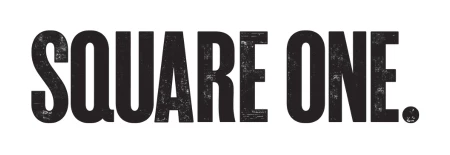Partner Article
Excellent customer service in a high-risk environment
High-risk environments, such as swimming pools, theme parks and adventure sports facilities, provide a unique challenge to customer service. For once, the customer isn’t always right, because you cannot allow a customer to do what they want if their actions may endanger themselves or others.
As a child I often went paintballing for my friends’ birthday parties. After one particularly intense match, the marshall gathered us round to announce the score. We were all hot from running around, and I felt an itch develop under my chin. I edged my mask to the side just a little, and wiggled one finger in to scratch that itch. Big mistake. The marshall had seen me and I was promptly “disqualified” for fiddling with my mask in the live paintball area. I watched from the side for the rest of the afternoon, devastated. Neither me nor my friends ever went back to that site again. Now that I run seventy-five of my own premier paintballing sites, I still think back on that one incident. And though I think the marshall dealt with the situation badly, I can sympathise with his point of view. Adjusting your mask in a live paintball zone is dangerous, especially so at a children’s birthday party where excitement is high and self-control limited. The marshall made a decision that put safety first, but in doing so he alienated his customers. There has to be a better way.
How to provide excellent customer service in a high-risk environment It is possible to ensure that your customers are both safe and happy. Here are the guidelines we try to use to maintain the balance between customer service and health and safety:
Clarity.
Be sure to clearly communicate to your customers the potential dangers of an activity beforehand, and explain what steps will be taken to minimise those risks. If you might have to remove someone from an activity due to health and safety concerns, be sure to communicate beforehand that this is a possibility and explain clearly the type of behaviour that would cause this to happen.
Planning.
Take a minute to imagine that something has gone terribly wrong at your business. What happened and why? There’s always something that springs to mind. Now think about what steps could be taken to prevent this from happening. For example, if the danger is that a child will lose their helmet midway through an activity, make it company policy that all helmet’s are checked by a member of staff once fastened.
Listening.
If your customers are upset for any reason, try listening constructively to what they are telling you. If they are disappointed because they were lead to believe by your website that X would happen, and it didn’t, take that feedback onboard and change the website so that the mistake doesn’t happen again. This is a particular danger for ‘high-risk’ services, because activities that may look good to the marketing department might actually be too dangerous to run with customers.
Accountability.
A statement like “I’m not here to make sure you have fun, I’m here to make sure no one gets hurt” is about as charismatic as Judge Dredd. Health and safety is a priority, but that’s no reason to neglect customer service altogether.
Complaints.
We work incredibly hard to make our business ideas into a success, so when someone is critical it’s all too easy to come out swinging. If you find your first instinct is to criticise the customer back, then it’s time to pause and take a couple of deep breaths. Try to imagine that it’s not your business and that the customer is a friend telling you about a crappy experience they just had. Is it still so one-sided? Could you change anything to stop the same complaint being made in the future?
Kindness.
So you’ve tried everything, and you’re going to have to exclude that child from the activity. You’re going to make him sit out from the game and surrender his equipment - on his birthday of all days. You don’t have to make it worse by shouting at him, or acting aggressively. A fair but firm explanation of why you have had to exclude him should suffice, and there’s no reason not to have a safer activity for him to do away from the main group.
Watch out for the joker…
High-risk activities can sometimes attract a certain type - a type that can’t or won’t follow the rules. If someone shows signs of dangerous behaviour early on, by not listening to the safety talk for instance, then, after one clear warning, you may have to exclude them before the activity has even begun. If you have to remove them at the start of the activity give them a full refund. This will no doubt be frustrating for that customer, but it will show everyone else that you take their health and safety seriously.
Justin Toohig is the founder of Paintballing Ltd, an organisation with 75 premier paintballing locations located across the UK. You can talk to Justin about team away days and paintballing events for your company at info@paintballing.co.uk, or 0845 500 7755.
This was posted in Bdaily's Members' News section by Justin Toohig .
Enjoy the read? Get Bdaily delivered.
Sign up to receive our popular morning National email for free.








 The real cost of tendering for construction SMEs
The real cost of tendering for construction SMEs
 A welcome step forward – but let’s keep pushing
A welcome step forward – but let’s keep pushing
 Industrial strategy 'can drive business forward'
Industrial strategy 'can drive business forward'
 Industrial strategy 'can be game-changer we need'
Industrial strategy 'can be game-changer we need'
 Driving skills forward with near £100,000 boost
Driving skills forward with near £100,000 boost
 What pension rule changes could mean for you
What pension rule changes could mean for you
 North East can't be an afterthought in AI future
North East can't be an afterthought in AI future
 Understanding the impact of the Procurement Act
Understanding the impact of the Procurement Act
 Is the UK losing ground in life sciences investment?
Is the UK losing ground in life sciences investment?
 Construction workforce growth can't be a quick fix
Construction workforce growth can't be a quick fix
 Why it is time to give care work a makeover
Why it is time to give care work a makeover
 B Corp is a commitment, not a one-time win
B Corp is a commitment, not a one-time win